advocate
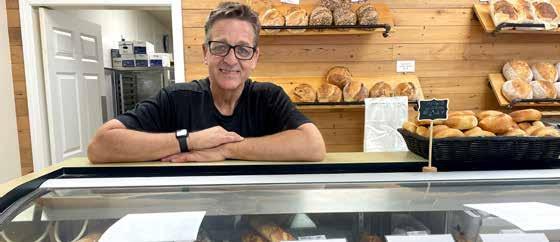


of Plymouth has been helping people of all ages find ways to deal with challenges for 25 years
physical, emotional, and spiritual
‘Bread Guy’ builds community, one loaf at a time
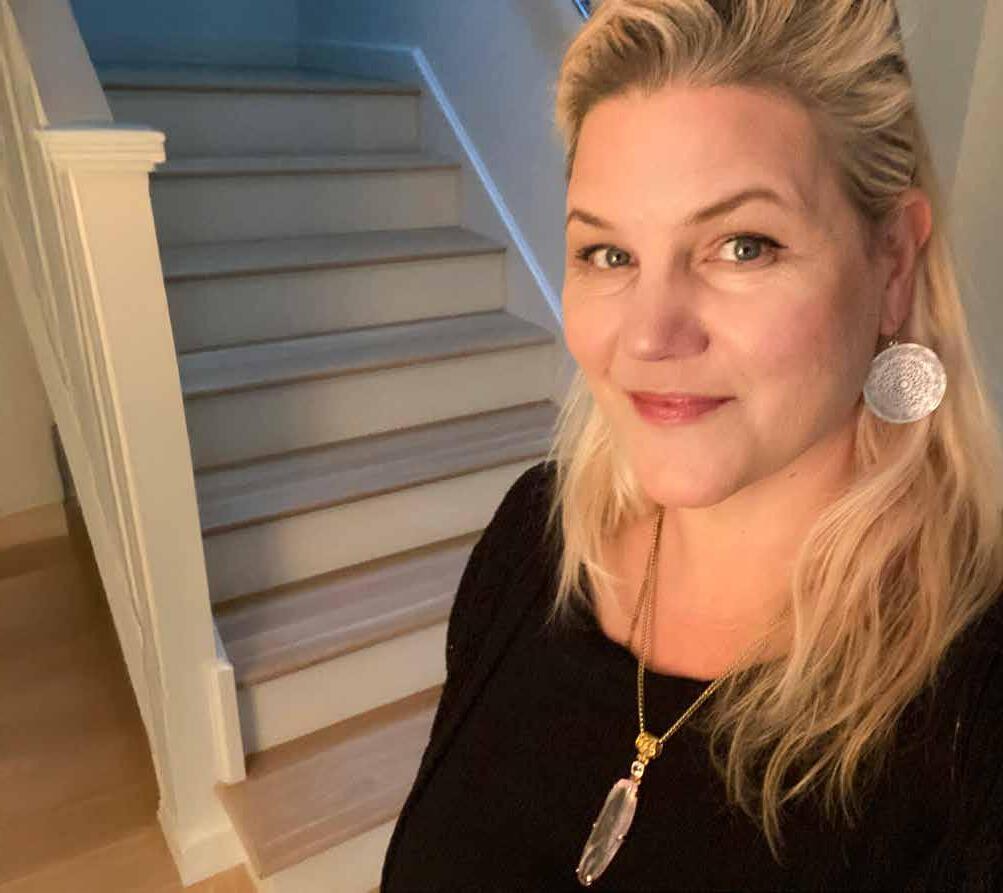

the
Your caregiving journey can be challenging in all kinds of ways.
AARP is here to help you take care of what matters most. Get answers, connect with other family caregivers and find local resources.
To learn more, visit aarp.org/caregiving.


By Jennifer Benson AArP MAssAchusetts stAte Director
As autumn settles in, October emerges as a pivotal month for older Americans; a time when two major events converge that can have lasting impacts on your financial and health security. Whether you’re already retired or planning your next steps, it’s essential to keep abreast of both the upcoming Medicare open enrollment period and the annual Social Security cost-of-living adjustment (COLA) announcement.
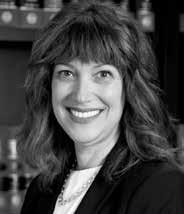
Each fall, Medicare’s open enrollment window offers you the chance to review and, if needed, switch your insurance plans for the coming year. Yet, despite the potential for significant savings and improved benefits, only about 10 percent of Medicare beneficiaries actually change their coverage. This means millions may be missing out on thousands of dollars in savings or face unexpected costs for prescriptions, doctor visits, or new health needs.
There are several reasons why revisiting your Medicare choices each year matters:
• Your prescription costs might have changed.
REQUIREMENTS FOR UPLOADING QR CODES:
• You may be planning to spend summers or winters in a different state, affecting your coverage.
The QR code seen on this template must be deleted or changed. QR codes must be created in the Uniqode platform using your AARP account. Download either .jpg or .png format for use in the template.
• You might need a specific doctor for an upcoming surgery.
• Your health needs may have shifted—perhaps you’re newly diagnosed with a chronic condition, or, conversely, you’re in great health and want to adjust your plan accordingly.
• Your income may have dropped, opening the door to additional benefits or savings.
For information about licenses, training and support, review the QR Code Guidance on InfoNet or contact BrandHelp@aarp.org.
Reviewing your plan in October ensures your coverage suits your current needs and budget.
October also brings the announcement of the Social Security cost-ofliving adjustment (COLA) for the following year. For over 50 years, the automatic annual COLA—secured with the help of AARP in 1972—has helped ensure that your benefits keep pace with inflation. This adjustment is especially critical for older adults, as Social Security is often the only source of inflation-protected income during retirement, helping you manage rising costs for groceries, housing, and prescription medications.
REQUIREMENTS FOR UPLOADING YOUR OWN PHOTO: You may upload a photo to the template if (1) it was downloaded from the Digital Asset Hub, or (2) you can document that AARP has all necessary legal rights to use the photo, including identifiable individuals, artwork and trademarks in text and logo, in this template.
As I’m sure you know, Social Security turned 90 this summer. It is one of the most successful and popular initiatives in American history, helping generations of older Americans stay out of poverty and live with dignity. AARP will never stop fighting to protect the Social Security payments you earned.
The minimum suggested size for the photos is 4500 x 2700 pixels.
Navigating these important programs can be overwhelming, but you don’t have to do it alone. AARP offers a wealth of resources, guides, and personalized tools to help you understand your Medicare options, maximize your Social Security benefits, and take advantage of new tax provisions. Whether you have questions about switching plans, understanding your benefits, or how legislative updates affect your finances, AARP is dedicated to empowering you with information and support. You can find all of it at aarp.org. Or you can attend online or in person events where you can ask questions. We have webinars coming up this month. You can find those at aarp.org/ma.
Image resolution is best reviewed in “Preview” mode.
For more information about photography and usage rights, please review the Local Photography Guidance & Rules One-Sheet on InfoNet.
This October, take charge: review your Medicare options, watch for the Social Security COLA announcement, and turn to AARP for guidance on making the most of your retirement years.
Jennifer Benson is the State Director for AARP Massachusetts. For more articles visit www.fiftyplusadvocate.com.
By shAron oliver contriButing Writer
REGION - News of the passing of 76-year-old Ozzy Osbourne on July 22, 2025, sent fans and the rock and roll world reeling. The Godfather of Heavy Metal made headlines throughout his career spanning over 60 years including one controversial moment that almost got the U.K. native canceled in Boston.
Early Boston shows
The former frontman and vocalist for metal pioneers Black Sabbath performed with the band at area venues like the Boston Tea Party in 1970, and the Boston Garden in 1971 and 1975. These shows played a significant role in establishing a loyal fan base for the British rockers in the United States’ northeastern region. By 1979, Black Sabbath members were forced to show Osbourne the door after having had enough of his out-of-control behavior.
Osbourne recalled in his decades-old memoir, “I Am Ozzy,” “It was obvious that Bill (Ward) had been sent by the others, because he wasn’t exactly the firing type. I can’t remember exactly what he said to me … but the gist was that Tony (Iommi) thought I was a pissed, coked-up loser and a waste of time for everyone concerned.” Since his death, the book has unsurprisingly returned to Amazon’s bestsellers list.
The “Bark at the Moon” singer embarked on a solo career that initially experienced tragedy and a bit of opposition. Two weeks before Osbourne was set to play the Boston Garden in April of 1982, his guitarist Randy Rhoads was killed in a plane crash. Wife Sharon convinced him to continue the tour while his Blizzard of Oz band tried playing with a replacement for one of the greatest guitarists of all time. Adding salt to the wound, a wild rumor started which threatened cancellation of an upcoming show at the Garden.
In 1981, Osbourne bit the heads off two doves in front of record executives at a sales convention. The next year, a fan in Des Moines, Iowa threw a bat onstage. Thinking it was a rubber toy, Osbourne bit off its head and was later given rabies and tetanus shots. This led many to believe the singer was into animal cruelty and puppies might be next on the menu.
With that unfounded rumor in

mind, the sold-out show for April 2, 1982, almost did not happen after the Garden received a letter from the state Licensing Board for the City of Boston. The board was concerned about rumors that animals would be killed during the concert.
Not only did Osbourne go on to perform there, but some head-banging fans will remember flocking to his 1983 April Fool’s show at the Centrum in Worcester, and seeing him hang out at Cahoots, the downtown bar in the old Marriott Inn at Lincoln Square (now a Massachusetts College of Pharmacy and Health Sciences dorm). His popularity held even more so in the Bay State after the launch of Ozzfest, a touring festival (1996 to 2018).
His role in the reality TV Show “The Osbournes,” which chronicled his everyday life with his wife and children in their Los Angeles home introduced him to a new audience and wider fame whiled it aired on MTV between 2002 and 2005. It was considered a pioneer among reality shows focusing on the lives of celebrities and was cited as the mostviewed series on MTV. Interestingly, his signature song “Crazy Train,” from his debut solo album in 1980, did not hit the Billboard Hot 100 chart until after his death.
In August 2016, Osbourne joined Black Sabbath for a concert in Mansfield where he asked an enthusiastic crowd, “Is this the end for Black Sabbath?” Much to their disappointment, Osbourne followed up with an answer, “It is.”
Weeks before his death, Os-
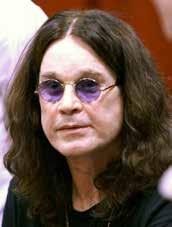
Rocker Ozzy Osbourne, the so-called Godfather of Heavy Metal, died last July just a few weeks after his final performance with the band that initially brought him to fame, Black Sabbath. (Photo/ Wikimedia Commons)
bourne was reunited again with his former bandmates during his farewell show in Birmingham, U.K., where he sang from a throne due to his Parkinson’s diagnosis. Among those who paid homage to the late



performer were the New England Patriots who for over 20 years ran out onto the field on game day to “Crazy Train.” The team posted, “Condolences to his family and all who mourn his loss.”




By MAtt roBinson contriButing Writer
PLYMOUTH - These days, everyone is seeking ways to enhance their health and well-being.
And while millions of people grab at the latest powder, pill, or puncture to keep them feeling healthy, many of the secrets to feeling good are within us.
For the past 25 years, Anne-Marie Harnett of Harnett Healing in Plymouth has been helping people of all ages (especially older folks) find ways to deal with physical, emotional, and spiritual challenges effectively.
Early introduction to holistic medicine
Introduced to acupuncture as a young child when she would accompany her mother for treatments, Anne-Marie was always open to a wide range of modalities and strategies.
“I grew up in a family where holistic medicine was part of our repertoire,” she recalled. “I would sit in the
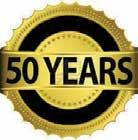
waiting room and look at the different charts on the walls while [Mom] was in her appointments.”
As her mother was fortunate enough to have an expert massage therapist among her large circle of close friends, Harnett was also privileged to learn the benefits of this type of treatment early on.
“I had my first massage at age 16,” the 52-year-old Zumba fan and swing dancer said. “The experience impacted me deeply!”
As she was an ice hockey player (in fact, the first female player in the town of Brookline), Harnett is also grateful that her mother introduced her to chiropractic when she was still in elementary school.
“My tailbone got knocked out of place a couple of times,” she explained, “and that’s really important to have corrected at that moment and not later.”
Wide range of modalities
While few of us had the access or parental insight to engage such
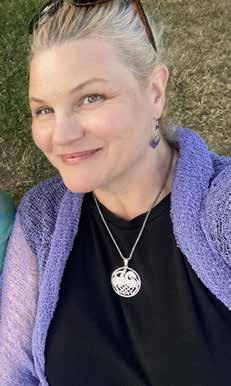
Anne-Marie Harnett of Plymouth has been
health-supporting treatments when we were young, Harnett has discovered (and in fact devised) a wide range of modalities that allow her to help many people repair and restrengthen, even much later in life.
“People want to feel good and are willing to open to new experiences,” she observed. “Especially as their body changes and they’ve experienced the limitations of Western medicine, they start seeking other professions, modalities, and points of view that can help them manage things like physical pain, worry, depression, or other limitations.”
As she has enjoyed such profound benefits from the healing treatments she has received throughout her life, Harnett knew early on that she wanted to help share these benefits with others to help improve their lives. Though she had originally considered a traditional medical school, Harnett eventually had her professional dreams turn to the realm of naturopathic medicine. After garnering a degree in cellular and molecular biology at Tulane University in

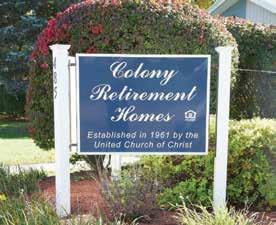

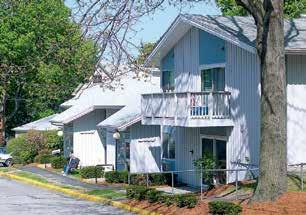

her mother’s home state of Louisiana, Harnett went to massage school in Colorado.
“Originally, it was a ‘year off’ thing after college,” she mused, “but then I ended up falling in love with handson bodywork and the thrill of helping people to feel better.”
Since then, Harnett has been an eternal student, learning and mastering a wide range of modalities, including cranio-sacral and polarity therapy, cupping, and trigger-point release, continuing to add and combine new systems in order to give each client the best and most effective care they can get.
“All of the modalities that I offer are ones that have made the biggest difference in my life,” Harnett affirmed.
Energy system teaching
As she is one of the few people in the world who is certified to teach it, Harnett is especially dedicated to the energy work system known as RYSE (Realizing Your Sublime Energies).
“RYSE is a series of classes that teach you about your energy system… and how to fix it yourself,” she explained. By looking at the root causes of apparent issues, RYSE helps practitioners learn how to “move through the world in a more protected and calm
way.”
Harnett teaches RYSE at her studio and online and loves watching her students transform before her (and their own) eyes.
“RYSE completely changed my life,” she maintained, “and gave me tools that I use in some fashion every day. It’s my favorite thing to teach and watch people go through their own journey of transformation and more deeply understand themselves!”
For those who might be more comfortable with talk therapy, Harnett champions Internal Family Systems (IFS).
“IFS helps you untangle long-held patterns of worry or fear,” Harnett asserts, noting that these patterns are often rooted in earlier experiences, “and bring compassion and healing to those places.”
As IFS is a talk-based therapy, Harnett offers sessions by phone for people who may not be able to make it to Plymouth on a regular basis.
“It teaches you about the different aspects of yourself,” she summarizes, “and how to heal yourself through more nuanced and internal relationships with yourself.”
Facilitating self-healing Whether she is using her hands to



work out a muscle knot or using gua sha scrapers and other tools to loosen tight tendons or supporting a client from far away, Harnett is most satisfied when she is able to help her clients heal themselves.
“I walk clients through how to facilitate their own healing,” she advises, “which is incredibly empowering. This work also creates deep insights into our patterns and why we react the way we do to life and people in [various] circumstances.”
In an effort to combine some of the many systems she has learned and mastered, Harnett created her own modality called HALO.
“HALO stands for Heal Align Love Open,” she explained. “It’s an advanced energetic technique to help heal on the deepest cellular level.”
From anxiety to vitality, she said HALO has helped many reconfigure their inner selves so their outer selves can appear (and be) stronger and more prepared for whatever challenges life may bring.
“We all need techniques to help balance and calm our systems,” Harnett observed,” and this is one of those techniques that can be easily used every day and create sustained benefits.”
Techniques for older clients
When asked which techniques have proven among the most effective for older clients, Harnett names cranial therapy and lymphatic drainage first.
“Cranial therapy [is] so relaxing and it also helps bring increased nutrition to the brain and nervous system,” she reasoned, “and lymphatic drainage is such an important way to flush the body in a gentle manner that helps keep our immune system functioning at its highest and best.”
However, she adds, energy-based systems like RYSE and HALO are also important for older people so they can maintain their energy and life spark even in challenging circumstances.
“We can have tools in our back pocket that we can use anywhere and anytime to help manage stress or anxiety or feeling overwhelmed,” she suggested.
No matter which modalities Harnett and her clients agree upon, her goal is always the same.
“I want to make it so that all of my clients are living their best lives and have the aging process be as gentle as possible,” she pledged. “All of the modalities I offer help to strengthen the body, calm the emotions, and balance the mind so that people can feel their best and do more of the things that they love.”









By shAron oliver contriButing Writer
BOSTON - Time to pull out the platform shoes, bell bottoms, dust off the mirrored ball and hustle on down to television station WGBH’s disco dancing contests and their Disco Dazzler dance marathon.
Dance contests
Imaginatively speaking, that is. People of a certain age could not escape the days of disco during the 1970s and for many, it was fun while it lasted. The folks at Boston’s WGBH TV channel even saw a way to marry the popular genre with dollars by sponsoring dance contests.
For those who may not remember, the station’s show “Dancing Disco” featured a series of dance-offs which were telecast live at Kenmore Square’s Boston-Boston discotheque on Saturday nights at 8:00 p.m. After that, five of the 40 winning couples went on to compete in the “Disco Dazzler” five-hour dance marathon fundraiser at the Lansdowne Street club which was televised. Some of the artists lending their talent to the beat during the time included disco

Boston television station WGBH sponsored a series of dance contests during the height of the disco era in the 1970s.
style ability outweighed endurance when it came to determining who took home the grand prize of $1,000, second prize of $500 or third prize of $250.
Fans reminisce
Disco Dazzler had many contestants as well as fans, some of whom had plenty to say on Facebook, including

mentions of dancing the night away at Boston-Boston.
Georgi Aiello wrote:
“I love this! Spent lots of nights dancing at Boston Boston/Lansdowne St.
I don’t remember the floor being lighted though.”
Paul Sullivan recalled:
“Billy Williams was the king of disco. Women waited in line to spin the floor with him. I believe he worked with helping out John Travolta.”
Deidre Ann Nota added:
“That was a great place to go dancing!”
Tommy Cross remembered:
“Son of a gun. I was there that night. Wow. Wow, blast from the past.”
Boston-Boston’s management donated the club for the dance-offs and contestants in Disco Dazzler were sponsored by companies, individuals, viewers inside the club and those at home who pledged cash to Channel 2 in the name and number of their favorite dancing duo. Disco
Celebrities dropped in New York City’s Studio 54 founder Steve Rubell was once asked to leave Boston-Boston disco for wearing jeans at one of its Disco Dazzlers. While the famous entrepreneur may have gotten the boot, another New Yorker was a cherished fixture at Disco Dazzler in 1978. Sally “Disco Sally” Lippman was a legend at Studio 54. The then 77-year-old widow decided to live life to the fullest after her husband’s death and found joy on the disco dance floor. Lippman was a regular at Studio 54 in her sequin dresses, feather boa and tiara but she would also dance her way up to Boston for a good time at Disco Dazzler. She continued attending disco parties and events up until her death at age 81.
The dancers were not the only ones who caught the attention of viewers. When asked by Charlie Stewart if disco was good for one’s health, the “Disco Podiatrist” suggested any exercise is good for anyone. There was also the famed couturier Alfred Fiandaca who had a disco fashion show and whose simple advice for those agonizing over the proper disco wardrobe was to “do your own thing.” One memorable moment occurred when Meat Loaf volunteered to dance with Danielle Torrez if someone would pledge $100. According to a story in The Boston Globe, Dale Dorman whispered something in the singer’s ear, to which Meat Loaf replied, “You’re right. She’s worth more than that. $200!”
“Disco Dazzler” was a fundraiser for WGBH but it began as an instructional disco dancing series “Disco Dancing,” which ran for two years locally before hitting the national market.



Laundr y care suite
∙Supportive services & coordinated activities
∙And much more... Now Leasing - Tour Today!
*62+ or disabled.
By sArA BeDigiAn contriButing Writer
GRAFTON – When Chuck Brown bought a 50-pound bag of flour during the COVID-19 pandemic, he had no idea it would come with a new identity: the bread guy.
A former school principal, 62-year-old Brown retired during the pandemic and, like many others cooped up in their homes, decided to start making bread. Eventually, word got out on Facebook, and soon enough, Brown’s hobby became a business.
Started at home
For nearly three years, he ran a cottage industry out of his house – baking different breads, delivering them to customers, and bringing his products to local farmers markets. What started as a hobby blossomed into a second career. A career focused on making people happy.
“Our motto is great bread equals great happiness,” Brown told the Fifty Plus Advocate. “And we actually live that all the time. Everything we do is focused on making people happy.”
Good bread requires the right ingredients, love, and early wake-ups. Brown begins his morning at around 3 a.m. to start baking the day’s bread and pastries. When preparing for a big weekend or a farmers market, his day starts at midnight or 1 a.m.
Making the starter, waiting for the dough to rise, baking it in the oven – it’s all a very delicate and time-consuming process. But the finished product is worth it, said Brown. Bread Guy Breads sells anywhere from 150 to 200 loaves each week. The most popular item is always the classic sourdough bread, according to Brown.
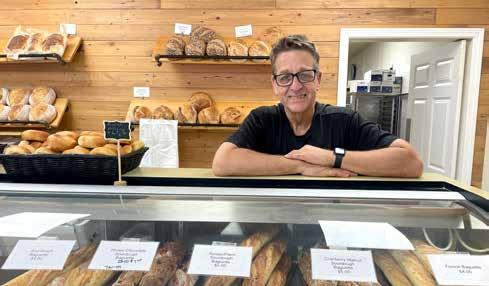
of choices
But there’s never a shortage of choices at Bread Guy Breads, which now operates a retail location at 204 Worcester Street. There are always new bread flavors, like a rosemary chive bread offered on the weekends, and Brown has ventured into other items like English muffins.
With the endless array of options – from cranberry walnut to cheddar garlic – it can be hard to decide which bread to buy. Some are great for sandwiches, while others are better for toast.
So, he’s become a sommelier of sorts. He enjoys helping people find the perfect loaf.
“[Someone] will come in and say, we’re having beef stew, what should I have? And we can all make recommendations on what bread – it’s like wine,” Brown said.
While the bakery is known for its breads, other items like muffins, scones, and croissants also fill the display cases, allowing customers to grab a sweet treat when they pick up their weekly loaf. In a couple of weeks, cof-
fee will be added to the menu.
Brown started offering a sourdough-based cheese pizza, which may become a menu fixture if enough interest is shown. From different bread flavors to new menu items, Brown said he gets most of his inspiration through collaboration with his staff.
Building a community
And the goal of making people happy through bread has never been forgotten. A community has formed around Bread Guy Breads, with plenty of regulars who come in each week. He enjoys each interaction with them.
“It is the best bread place ever,” a regular customer told the Fifty Plus Advocate. She goes into the shop at least three times a week to purchase bread and other pastries – the creme danish being her favorite. “[Chuck] is amazing with customers and remembers our orders.”
But Brown took it a step further. His business provides valuable experience to local students.
As news spread that there was a new “bread guy” in town, Brown was
approached by the Grafton Public Schools. Brown formed a partnership with Grafton Achieving Independence Now (GAIN), the district’s post-graduation program which helps 18- to 22-year-old students with special needs develop life skills via on-the-job training.
Brown’s Worcester Street bakery includes the storefront, kitchen, and a conjoining door to the GAIN Program. At Bread Guy Breads, students work with Brown to strengthen their retail and kitchen skills, whether it be doing prep work for making the bread, assembling boxes, or running the front desk.
Kelli Derosiers, the vocational coordinator of GAIN, said GAIN’s main objective is to focus on helping each student learn the skills they need to get a job at an outside organization.
“It is a good partnership,” Derosiers said. “They’re getting the best of both worlds.”
Brown said he wouldn’t be able to run the bakery without his staff of nine that works in three shifts: the ones that make the dough from midnight until 5 a.m., the bakers at 4:30 a.m. who make muffins and pastries, and his last shift that works during business hours.
Since all the baking happens on-site, the smell of fresh, delicious bread and the sweet aroma of baked goods can be found when walking into the store. The store is open Tuesday, Thursday, and Friday from 9 a.m. to 5 p.m.; Wednesdays from 9 a.m. to 12 p.m.; and Saturdays from 8 a.m. to 1 p.m. The shop can be found at the Grafton Farmers Market from 2 p.m. to 6 p.m. every Wednesday during the summer.
More information can be found on the company’s website https:// breadguybreads.com/.
By ADri PrAy contriButing Writer
WESTBOROUGH — In his lifetime so far, Dave McGrath estimates he’s taken over 1 million steps across Ireland.
The 51-year-old Westborough native and author completed his second tour of the country in three weeks in a journey that spanned from Shannon to Derry over a 230mile distance. That he walked. For the second time.
“I think two years ago was harder because I didn’t know what to expect,” he said in an interview. “I hadn’t done it before, and like anything, once you’ve done it, you know what to expect.”
In all, McGrath has seen 500 miles of the country by foot. His first grand walking tour of Ireland in 2023 took him another over 200 miles from Dublin to Dingle, and he wrote a book about the experience called “500,000 Steps Across Ireland” that was published earlier this year.
The book outlines McGrath’s
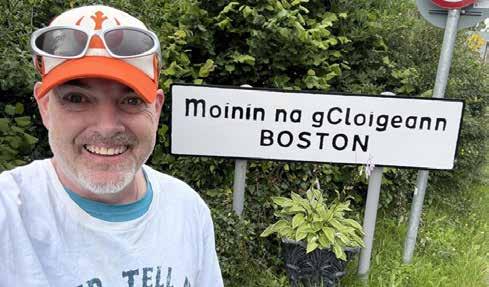
four week journey and touches on personal anecdotes based on the people he met in his travels. These trips are deeply personal and important to McGrath, who was diagnosed with Crohn’s disease at the age of 14 and then was diagnosed with brain cancer at 18, and uses them to not only educate himself about the world, but to raise money and awareness for the causes clos-
est to his heart.
Though he’s been cancer-free for decades, McGrath never wastes an opportunity to spread awareness and on these kinds of trips he got in touch with area bars and restaurants to ask to perform, either a few songs or a comedy routine, to raise money for a local cancer charity. A handful of pubs let him, and he said he had a lot of fun getting to sing, play guitar, and do a self-deprecating stand-up routine for the Irish locals.
“What made both trips great were the people I met. It wasn’t the castles, it wasn’t the cool scenery. Those were great. But [the people] really made the story amazing and unbelievable and something that I’ll hold on to for the rest of my life,” he said.
Shannon, where he played a local pub and raised money for the Irish Cancer Society. The next day he walked to Tubber, another small village that McGrath described as having “one of everything,” which he said made it easy for him to decide where he’d be staying and which locals he’d be talking to. From there, he met a kindhearted person who drove him to Boston, Ireland, so McGrath could take a photo with the village sign on July 4.
McGrath visited the Gort Cancer Support Center in the town of Gort, where he connected with the patients receiving care at the facility and shared his own stories of cancer survival. Later that night he found himself unexpectedly performing at a local bar alongside Irish musicians.
He hopped around the country for the next few days, aiming to take walks lasting between three and five hours each day to get from one location to another. Eventually, he landed in the town of Tuam on July 10, where he did an hour of songs and jokes and raised hundreds of dollars for the Tuam Cancer Center.
❖ Elder Law
❖ Long Term Care Planning
❖ Masshealth Applications
❖ Corporate & Business Planning
Generosity was a common theme throughout McGrath’s journey, as the Westborough native often found himself in conversation with interesting locals who were equally as invested in his walking tour as McGrath was in their culture, and many offered to help him see as much of the country as possible. One instance McGrath recalled came on July 14 when he was walking to the town of Ballymote in the pouring rain, trying to hitchhike a ride from passersby — “it will be the right car at the right time,” he kept telling himself. Eventually, an Australian family of four picked him up and brought him into town. ❖ Estate Planning
❖ Real Estate
❖ Powers of Attorney
❖ Guardian/Conservator Issues
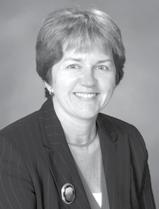
This time around Ireland, McGrath wanted to travel a comparable distance without repeating his 2023 trip. He decided to take a winding route from Shannon, a town in County Clare, Ireland, all the way to Derry, a city in Northern Ireland, that was partially inspired by his love for the show “Derry Girls.”
His route first took him to Quin, a village about 10 miles outside of
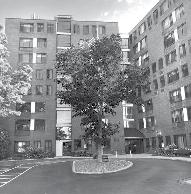
For Spacious 2 BR Apts.
Subsidized through HUD’s Section 8 Program for the elderly and handicapped. Rents are based on 30% of adjusted monthly income. Conveniently situated in downtown Gardner, Binnall House features air conditioning, wall-towall carpeting, and modern applianced kitchens. Other features include solarium, activity rooms and an active senior population.



In the last week of his walking tour, McGrath made it all over: Sligo, Cliffony, Ballyshannon, Donegal, Ballybofey, Letterkenny, and Carrigans, before finally reaching Derry on July 22. Derry, he said, was easily his favorite stop of the trip and was where he spent time going through the area’s history and pop culture memorabilia. Following Derry, McGrath spent a few days traveling through Northern Ireland and the Isle of Man, learning about the history of the regions and adding to his step count.
Much like his first trip, he plans to write about his travels and the people he met along the way.
“Pretty much every night or every other night I filled a journal,” McGrath said. “I’m in my second journal now.”
Beyond his advocacy work, the trip allowed McGrath to explore his heritage and connect with his culture.
“I feel more comfortable in Ireland than I do in the United States and it’s not even close,” he said. “There’s no question — every fiber of my being feels better in that place.”
When he landed back in Westborough in early August, McGrath was only home for a few hours before he departed on a ten hour road
trip to Prince Edward Island in Canada to visit family. Traveling never tires him, and when people ask how he’s doing, he always answers honestly.
“I’m having the time of my life… I’m literally living the dream when I’m doing these trips,” he said.
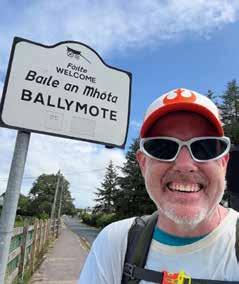
Dave McGrath of Westborough has walked 230 miles across Ireland, raising cancer awareness and funds for research and treatment, and making many friends along the way.







Trust Our Family With Your Family
Are you or a loved one in need of top-quality home care services?

Contact us today to see how we can help! info@trustedlikefamilyhomecare.com • 508-579-1890 www.trustedlikefamilyhomecare.com and disabled adults in Worcester County
• Locally owned and managed – fully insured and bonded
• Client satisfaction and service are our top priorities!

There are many tests that come our way every day. In 1 Peter 4:12, Peter tells us not to be amazed and bewildered by the test that we have to endure because by them God is testing our “quality” or our character. We all go through them, and we shouldn’t be confused about why they come our way. Our hearts are being tested to prove our character. Every time God gives us a test, we can tell how far we’ve come and how far we still have to go by how we react to the test. This is a good thing because we can never get to where we need to be if we don’t recognize where we are.
~ Closer to God Each Day, Joyce Meyer
Sponsored by Chief Joseph Robert J. Terkanian, P.O. Box 808 • Northborough, MA 01532

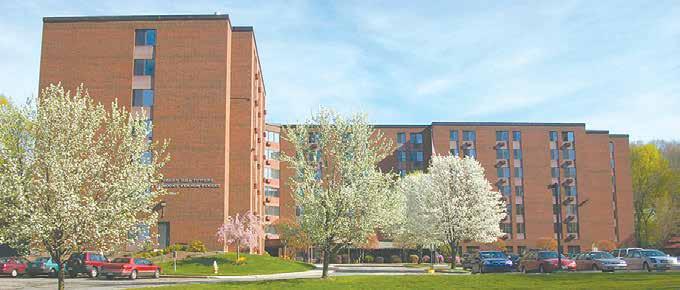
Within the building amenities include:
• A Theater-like media center
• Handicap-accessible lounges on every floor
• Library equipped with two computers and free internet access
• Physical fitness center
• Game room with billiard table
• Community room with bingo board and large screen TV
27 Mount Vernon Street, Worcester, MA • O ffice O pen D aily 8:00 am - 4:30 pm
To receive an application please call 508-755-6062 TDD# 508-755-0228
Now accepting applications for 62 years of age and older and those who are under 62 years of age and are permanently disabled.
Applicants must meet HUD annual low income guidelines. Preference is given to individuals 62 and older.
• Contemporary styled 1 & 2 bedroom apartments
• New kitchens with built-in microwaves and granite-like countertops
• Small pets welcome
• Heat and Hot water included
• Bus route / ample parking
• Beautiful landscaped grounds with gazebo


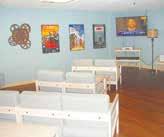
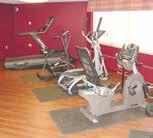
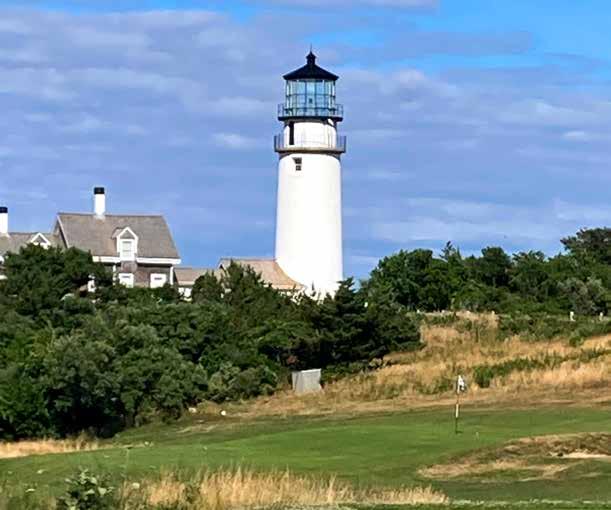
By sAnDi BArrett contriButing Writer
REGION - Cape Cod is beautiful any time of year, but the fall offers special perks for shoulder season travelers. Fun October events, little to no wait at restaurants, deals on accommodations, less traffic, and good weather will contribute to your relaxing Cape getaway.
With exciting events sprinkled throughout the month of October like Oysterfest, Vinegrass Music Festival, Halloween in Provincetown, and the Full Moon Tour, the Outer Cape is a unique fall getaway.
Provincetown
Provincetown (P-town to those in the know) offers guests a more relaxing, “mingle with the locals” kind of atmosphere.
Fun October events include the Columbus Day weekend Monumental Yard Sale. A town-wide gathering featuring stores and private residences selling interesting finds. If you love a good bargain, now is the time to shop.
The month closes out with Halloween Weekend, October 30 to November 2. P-town knows how to throw a great party, and a costume party is the ultimate celebration atmosphere. The Crown & Anchor presents “Witch Perfect,” an award-winning parody of the Disney classic, “Hocus Pocus” – in drag, of course. Check out Northeast Ursamen’s Spooky Bear Weekend for all the parties, dances, and ghoulish gatherings.
Dine at Pepe’s Wharf Restaurant for exceptional seafood served up with beautiful water views. The
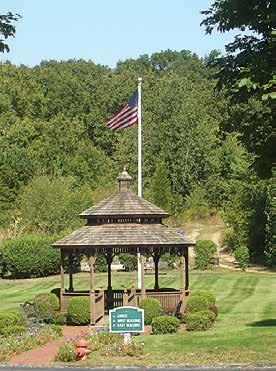



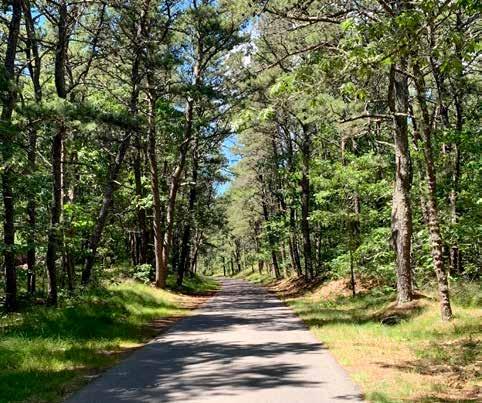
Wellfleet anchors the eastern end of the 25-mile Cape Cod Rail Trail, which stretches all the way to Dennis. (Photo/Sandi Barrett)
1620 Brewhouse offers elevated pub grub with a nice selection of draft beers. For dessert, check out Lewis Brothers Homemade Ice Cream – delicious, small-batch flavors like Mudslide Chip, Ginger, and White Russian sit alongside traditional ice cream flavors.
Truro
Take an autumnal stroll in the surf on Cold Storage Beach, Ballston Beach, Corn Hill Beach, or Head of the Meadow Beach. It is a peaceful way to get your step count up without battling the crowds. The Cape Cod National Seashore’s hilly dunes and expansive ocean views are salve for your summer-weary soul.
Highland Light, Cape Cod’s oldest lighthouse, is the spot for unspoiled panoramic views. You can tour the lighthouse, visit the exhibits, and pick up a souvenir in the Keeper’s Shop.
The Vinegrass Music Festival is October 5. The iconic blend of Americana and bluegrass music styles offer a toe-tapping beat while you enjoy a perfectly aged wine from Truro Vineyards. Held on the vineyard grounds, the one-day autumn festival is a wonderful tradition to kick off your fall festivities.
Wellfleet
Wellfleet’s signature October event is Wellfleet OysterFest, happening October 18 and 19. This is the 25th year celebrating these gems from the ocean. Local eateries turn out amazing nibbles, beer and wine gardens will quench your thirst, and live music fills the air as local crafters ply their wares. The iconic oyster shucking competition is not to be missed.
If you like museums that are a little out of the ordinary, visit Mar-
coni Wireless Station. Here you will learn about the history of wireless communication. On January 18, 1903, the first transatlantic wireless Morse code messages between South Wellfleet and stations in England were sent. This allowed King Edward VII and President Theodore Roosevelt to pass communiques in a timely manner.
Wellfleet is home to beautiful Atlantic facing beaches including Lecount Hollow, Cahoon Hollow, Marconi, and Newcomb Hollow. These south facing beaches along the National Seashore are quintessential Cape Cod sandy retreats in the fall.
The Lecount Hollow Trailhead anchors one end of the 25-mile Cape Cod Rail Trail. Stretching from Wellfleet to Dennis, the Rail Trail is a scenic bike and walking path through charming Cape towns, local ponds, and lush backyard gardens.
Eastham is known for its iconic Nauset Lighthouse. There are still a few tour dates open in early October to climb the lighthouse steps and take in the sweeping panoramic views. Their Full Moon Tour is October 6 and is a beautiful way to enjoy a crisp, clear coastal night.
Eastham beaches include Coast Guard Beach, Nauset Light Beach and First Encounter Beach. Fun fact, First Encounter Beach is the historic location of the first encounter between the Mayflower Pilgrims and Native Americans.
Arnold’s Lobster and Clam Bar is a popular spot for seafood. Whether you are craving a succulent lobster roll, fried-to-perfection jewels of the sea, or a classic burger and fries, Arnold’s is the spot. After your meal, work off some calories with a round

of on-site mini golf. To top it all off, stroll over to the ice cream shop for everyone’s favorite beach vacation dessert.






Brothers Ice Cream in Provincetown offers some unique small batch flavors alongside perennial favorites. (Photo/ Sandi Barrett)
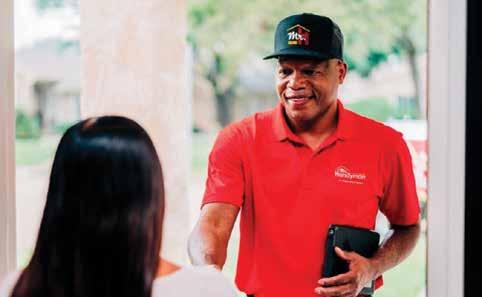


By shAron oliver contriButing Writer
CAMBRIDGE - Harvard Square has been home for a lot of “local celebrities” over the years. They may not be household names outside of Massachusetts or even Cambridge, but many people remember them well and were touched or influenced by their character. One such person was Dr. Hugh Morgan Hill, better known as Brother Blue, the storyteller.
Captivating audiences
Brother Blue served as a first lieutenant in the army during World War II, graduated from Harvard in 1948, and earned a master’s in playwriting from the Yale School of Drama with a Ph.D. from Cincinnati’s Union Graduate School. During his struggles in playwriting, the Ohio native discovered he had a gift for captivating audiences while describing his stories. With his wife Ruth at his side while bedecked from head-to-toe in blue attire and his trademark butterflies painted on his face and hands, Brother Blue told his stories to local prison inmates. He also brought his storytelling to festivals, college campuses and stages across the globe including the Bahamas, England, Canada, Italy and Russia.
Commentors like memorablem72 took to Facebook to share, “I remember seeing him perform in Beverly. I loved him so much. He was one of a kind who would make you feel better about yourself. I wish I could have introduced my kids to him.”
TenBearsII added, “I was a child growing up in the city of Cambridge, Brother Blue would appear
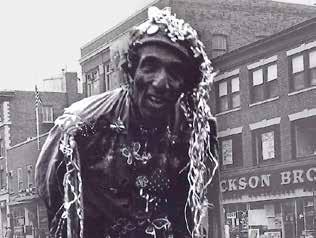
from nowhere, while we were in camp, bored by the activities, he would show up and tell us a story. He would captivate children and adults alike, he was a Griot in every sense of the word, I saw him tired in years as the winter of our lives took shape. While he tired, the shine in his eyes, the hope on his lips and the sweet love in his heart never diminished. He continued to do his thing until the thing was done, no one else could do his job, He was the ONLY ONE!! He taught us about me, and he taught us about you. There was only one and incomparable, Brother Blue!!! I love and Treasure you Griot!!!”
Soothing the emotionally wounded Brother Blue did not have a standard job. He made his living weaving stories while often walking about Harvard Square or downtown Boston barefoot. His educational credentials would have allowed him to
counsel the emotionally wounded within the walls of a warm and welcoming office. Instead, he chose to go where the emotionally wounded dwelled be it a prison, bar, street corner or homeless shelter. He was named the official storyteller of both Cambridge and Boston by resolution by both city councils.
Born into poverty rife with childhood memories tarnished by racism, neither of Brother Blue’s parents went beyond the third grade. His father, a bricklayer, was once beaten by muggers for refusing to hand over money he was planning to mail to Brother Blue. Despite his Ivy League education, Brother Blue’s intentions were to attend Harvard Law School and as an attorney he would set free all those who did not belong in jail. He did not chase after economic freedom either but rather the freedom to be like a butterfly and like butterflies, epitomize hope.
He was cast as a modern Merlin in the 1981 film “Knightriders,” and his show “Street Corner Classics with Brother Blue,” on Cambridge Community Television was a fan favorite. Two books have been written about him: “Brother Blue: A Narrative Portrait of Brother Blue A.K.A. Dr. Hugh Morgan Hill” in 1995 and “Ahhhh! A Tribute to Brother Blue and Ruth Edmonds Hill,” released in 2003.
The beloved street poet and philosopher who encouraged his listening audience to imagine bigger worlds, died in 2009 at the age of 88. At the time, the Boston Globe had reported that even on his deathbed Brother Blue had one last story to tell – a love story.
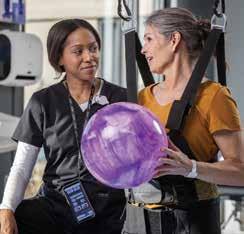





By MichAel PernA Jr contriButing Writer
WORCESTER - From the time it opened in March 1959, Speedy’s Drive In restaurant became “the” place to be, not only for teenagers but for families and their children.
The restaurant itself, located at 224 Shrewsbury Street, was unique –customers would park their cars next to a drive-in style speaker. They could then place their food order for the popular burgers (complete with a special sauce), shakes, and other treats. The orders were transmitted to a switchboard operator, then delivered to the customer’s cars, making Speedy’s a unique experience for the time.
The restaurant was owned and operated by George and Marion Busada. Ms. Busada was the sister of the owner of the popular Abdow’s restaurant chain.
Hot rod haven
Speedy’s quickly became a popular gathering spot for local “hot rodders” to show off their cars. The Busadas had one rule regarding the hot rods – customers were asked not to “scrub out” when leaving the restaurant. Of course, this didn’t stop them from spinning their tires doing a “scrub out” after they had travelled a little way down Shrewsbury Street. After taking on a
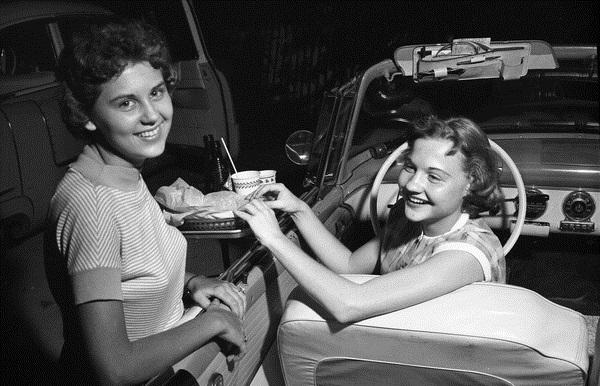
racing challenge at Speedy’s, it wasn’t unusual for customers to travel down to Lake Avenue or I-290 (which was still under construction) to have a drag race.
The restaurant was located on the site of the former Laipson’s Dairy Bar. A large sign was a prominent feature in front of the building. Speedy (a young boy figure) was part of the sign, holding a large burger. A huge arrow pointed across the top of the sign, lit by neon, guiding customers into the restaurant’s parking lot. The back portion of the sign advertised “Burgers” and “Eat in
By MAriAnne lyons Delorey, Ph.D.
Moving day has come, your toothbrush was swept into one of the many boxes before you. You start unpacking the boxes, picking up each item and holding it for a minute. You are aware of what you left behind. But what lies ahead?
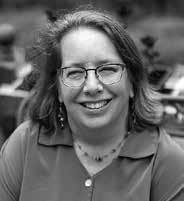
Moving to a new place is such an emotional roller coaster. People can experience dread and loss in equal measures with hope and excitement. But once the decision has been made and the move accomplished, how do new people actually find community without losing themselves in a new home? Making matters more complicated, many aging adults go from their own home into a multiunit building — your neighbors are so close, and you don’t even know them yet. How do people cope with such a huge transition?
Start with your space. Your four walls are a blank slate and represent a new start. Decorate them to show who you are, what you love and where you have been. Make sure your space fits your style — comfortable or chic, contemporary or classic. Don’t forget to garden. If your community allows it, make sure you plant outside your patio or put tomato plants on your balcony. Nothing says home like dirty fingernails.
Next, learn the community space — ask for a tour of the property even if you’ve been there a month. As the best way to learn something new is to teach it, offer to guide tours for applicants.
As part of offering to guide new applicants, study activity calendars and learn routines. Find out who does puzzles in the library or plays bingo on Satur-
Your Car.”
Fond memories
Today, Speedy’s is remembered by many former patrons as a scene that could have come directly from the movie “American Graffiti” – complete with the many 1950s and 1960s “souped up” cars whose owners frequented the place. One local who has fond memories of Speedy’s is Joseph “Joe” Azzarone, who grew up in the Shrewsbury Street area. “People came from all over the city to go to Speedy’s. The food was good, especially the burgers! They al-
ways had a cop, Ernie Favulli, working there to keep things peaceful, but it wasn’t a wild place. The guys would go there with their ‘hot’ cars, then go drag racing.”
Even young kids loved the place. Sisters Sandy and Linda McKee, who attended Elizabeth Street School as kids, remember being picked up at school by their mother at lunchtime, then driving to Speedy’s for burgers and fries, along with a shake. “The chocolate shakes were my favorite,” Sandy recalled, even after all these years.
Gone but not forgotten
As the 1960s progressed, the drivein’s speaker system used for placing food orders began to lose its uniqueness due to advances in technology.
The end of Speedy’s came quickly – a fire destroyed the business in 1967, and it never reopened, being replaced by a car dealership.
Although Speedy’s was gone forever, it was never forgotten by its many customers. It was the inspiration for the first “Summer Nationals” car show held in Worcester in 1991.
Many former customers stayed in touch with the Busadas over the years –when George Busada died in 2017 at the age of 92, several (now middle-aged or older) former patrons attended the services, some still driving their “soupedup” hot rods.
days. There is no requirement that you join in, but if you know who is doing what in each area, you know what your possibilities are.
Slowly, you will learn names. You will learn who to ask for a cup of coffee or who to see with maintenance questions. You will learn who to avoid and who to welcome when they approach you. You will find your community. If you want to hurry up the process, try reaching out. One of these activities might just bring you closer:
• Hold a yard sale;
• Bring cookies to neighbors;
• Join activities;
• Start a book club;
• Start a reminder list of names in your unit. Keep notes on how to remember their names;
• Babysit your grandchild or granddog and take a walk around the grounds. Many people will stop you to meet your company;
• Start a newcomers club.
Be prepared for the honeymoon period and be prepared again for it to end. Make a list of the reasons you decided to move. Reference this list when you are feeling like moving was a bad idea. Acclimation takes time. Know that you made the best decision you could at the time and appreciate what you got that you wanted. If this community is truly not the right fit for you, look around to see what else is out there. But give it time first. Truly let yourself sink in. Most often, community will find you.
And finally, successful integration comes from what you seek. You probably remember Groucho Marx’s famous quote, “I refuse to join any club that would have me as a member.” Ask yourself, what did he seek? Approval and acceptance? Don’t think of your blank slate on life like this. Think like Eleanor Roosevelt who said, “When you cease to make a contribution, you begin to die.” For it is only when we are choosing community for what we can give that we also welcome community into our lives.
Marianne Delorey, Ph.D., is the executive director of Colony Retirement Homes. She can be reached at 508-755-0444 or mdelorey@colonyretirement.com and www. colonyretirementhomes.com. Archives of articles from previous issues can be read at www.fiftyplusadvocate.com.
By JAnice linDsAy contriButing Writer
I might owe my existence to a piano.
In 1920, a young couple in a Rhode Island village, expecting their second child, bought an upright piano. People still made their own music then, even as the radio and records were coming into wide use. It was the golden age of the piano. Every family who could afford a piano had one and somebody who could play it.
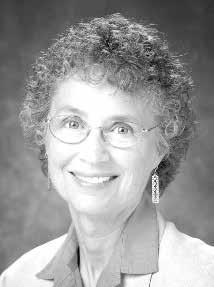
That second child, who would become my mother, loved the piano. As other children came along, the family couldn’t afford piano lessons, so she taught herself to play.
Fast forward to the Great Depression, in the early 1930s. The couple now had six children. My grandfather, like many men, was jobless. He had been managing the family grocery store. When customers couldn’t afford to pay, he gave them groceries anyway. This was not, as we might say now, a sustainable business model.
Creditors could take their possessions. My grandmother would not let them take her beloved piano. Family members moved the piano to her sis-
ter’s house, where there were only two children and a husband with a reliable job.
The Depression eventually ended for this family when my grandfather was appointed postmaster of the village, a steady job at last. The piano came home.
My mother continued playing. One day, she answered an ad from a little dance orchestra. The orchestra leader was a pianist, but playing all evening for dances was a physical challenge, and he wanted a pianist to help him. She was hired. Before long, she married the orchestra leader. Together they made not only beautiful music, but me.
Without my grandmother’s piano, who would I be? Would I be at all?
In our house, we had my father’s piano. My parents needed to know how to play all the popular songs. My younger sister and I grew up surrounded by popular music. Even now, we can sing dozens of songs that we don’t remember learning. We absorbed them.
One of my earliest memories is me as a performer. I was four. Local entertainment included talent shows in the village hall, where my father played for the singers. While he played at the corner of the stage, I stood center stage, before what seemed like a huge audience, in the darkened hall, and sang, “I’m Looking Over a Four-Leaf Clover.”
I learned very early that there’s a big difference between listening to music and making music. When you’re listening, you’re on the outside of the music looking into it. When you make music, you’re inside the music looking out.
I made music throughout my youth in choral groups and piano-playing. But then I got busy with marriage, motherhood, and a career. There was little time for making music.
That busy life eventually quieted down. Ten years ago this month, I signed up for a beginners’ ukulele class offered by adult ed. I was nervous. Could I do this? I managed. The ukulele is not hard to learn. And you don’t have to be an advanced player to enjoy making fairly good music.
Two years after that class, our library started a ukulele group and I joined. We’re still here, practicing and performing and having a fine time. Making music with friends – living inside the music together and looking out – it’s so satisfying and such fun. I highly recommend it.
By the way – in case you’re wondering – my grandmother’s piano lives with one of my brothers. My father’s piano lives with a nephew.
And I’m left to ponder: Who would I be if my grandparents had bought a ukulele instead of a piano?
Contact jlindsay@tidewater.net.
By shAron oliver contriButing Writer
BOSTON – The Bell in Hand Tavern has lasted longer than nearly any other pub in the United States. 230 years, to be exact. A visit to one of the nation’s oldest pubs often means regulars and tourists alike come for the ale but stay for the tales. Founder Jimmy Wilson’s legacy began as Boston’s town crier, a career that lasted for 50 years. However, he went beyond announcing the sale of goods, loss of property, the Declaration of Independence, the Boston Tea Party and the impending Battle of Bunker Hill. Beloved by the city’s children, Wilson would also announce news of missing children.
Later career as pub owner After retiring from ringing his bell to shout the latest goings-on as the town crier, Wilson, who was not fond of liquor, established The Bell in Hand Tavern in 1795 and managed the watering hole during his latter
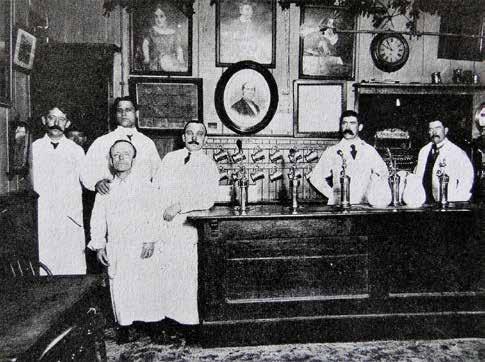
years. Patrons like Paul Revere and statesman Daniel Webster quickly favored it for a gathering spot to gossip and discuss news. Founding Father, influential American Revolution figure and brewer Samuel Adams even contributed by making ale there. The original building was where some say colonists met to plan the American Revolution.
The Bell in Hand Tavern moved around the neighborhood a few times from its original location on Elm Street before finally settling at 45 Union Street. It survived fires and Prohibition but did close due to Prohibition from 1920 to 1933. It was the only time it ever closed. During this time, Boston was known to have hid
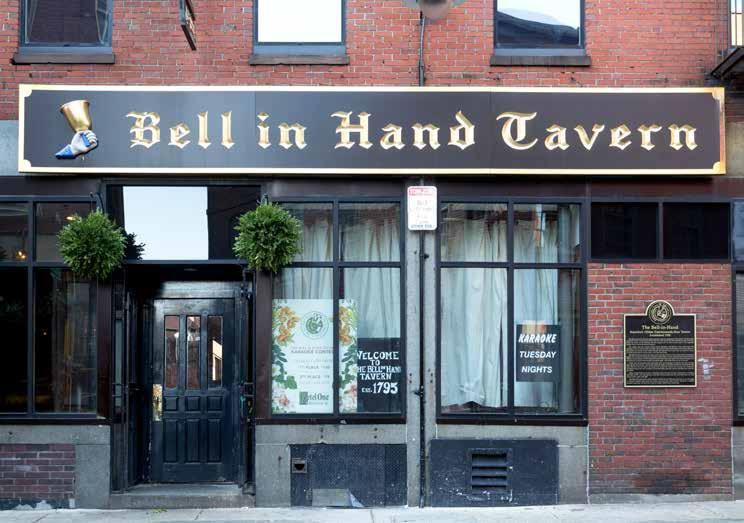
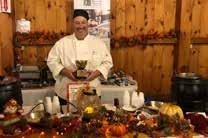

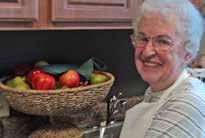
in the joys of the harvest season—apple picking, baking, and delicious seasonal foods!
Life is uncommonly good at our Assisted Living Residence in historic downtown Gardner!
We offer worry-free living at affordable rates in private apartments with a variety of services available, including:
den tunnels. The tavern also had tunnels that connected to nearby buildings. These secret passages allowed patrons to escape during police raids. Reopening of The Bell was met with joy by many of the city’s males, but not the women, since they were not permitted entry until the late 1960s.
The popular tavern gained a reputation for selling “the best ale in Boston,” attracting newspaper staff, financiers, Harvard professors, sailors, artists and writers and flourished under a succession of keepers. The ale was so thick it was served in two pewter mugs: one for the ale and another for the foam. Taverns were popular places for conducting business,
• Daily social activities & programs
• Three chef-prepared meals daily
• Assistance with personal care needs
• Medication reminders & safety checks
• Laundry & housekeeping services
• Dedicated, caring staff 24/7

For more information or to schedule a tour, call Kristy Livingston at (978) 632-8292 or email info@hwcommons.com .
By shAron oliver contriButing Writer
BOSTON—Before the invention of the telephones, fax machines and satellites, people used telegraphs as a form of communication, thanks to its inventor Samuel Morse whose name is perhaps more synonymous with the Morse code.
Boston native began as a painter
Born the son of a pastor in Boston’s Charlestown neighborhood in 1791, Morse began his career as a professional painter and while married to his wife Lucretia Pickering Walker, the couple had three children. He received commissions to paint portraits of Presidents John Adams and James Monroe, a list of wealthy merchants, and a series of allegorical works depicting the inner workings of the U.S. government to hang in the halls of Congress.
In February 1825, Morse was away in Washington, D.C. working on a painting commission. While he was on this trip, he received a letter from his
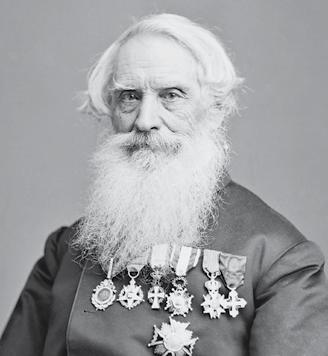
father stating that his wife was gravely ill. By the time he returned home to New Haven, Connecticut after receiving the standard, slow-moving horse delivered mail, she had already died and had been buried. Lucretia Morse

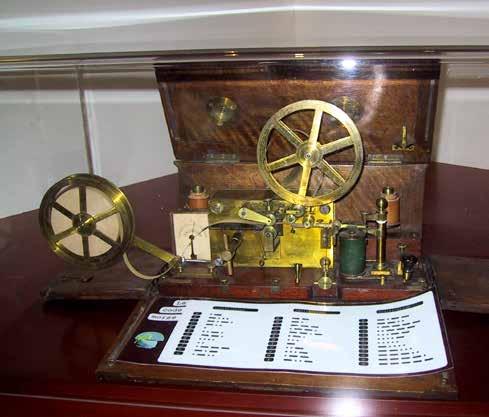
was just 25 years old. Devastated by the loss and the time it took for the message of her illness to reach him; her death would become the impetus for his work on the telegraph.
During a voyage from England, Samuel Morse met a scientist named Charles Thomas Jackson who told him about the properties and mechanics of electromagnetism. Excited about the news of electricity being able to travel for such long distances over copper wires, Morse started working on a device for that purpose.
Inventors in the U.S. and Europe tried developing electric telegraphs in the 1820s using different ways to achieve their goal but American inventor Joseph Henry’s method of using electromagnetics to send electricity as far as a mile of wire caused a bell to sound at the other end of the wire. However, it was Morse who perfected Henry’s method and developed the single-wire electric telegraph, making it a commercial success.
Morse demonstrated his device to the public in 1838, but it was not until 1843 that Congress gave him $30,000 to build an experimental telegraph line that traveled 40 miles from Washington D.C. to Baltimore. The first news wire was sent in May 1844, before the line was fully completed. It was news that the Whigs had nominated Henry Clay to run as their candidate for pres-
ident and was wired to the Capitol by Morse’s partner Alfred Vail. Later that month, after the line was fully finished, the next formal telegraph was sent, “What hath God wrought?” and delivered by 17-yearold Annie Ellsworth, the daughter of Morse’s friend and Yale classmate Henry Ellsworth. Young Annie was rumored to have a crush on the much older, widowed inventor. In 1835, Ellsworth had been appointed as the first Commissioner of the U.S. Patent Office and quickly became a champion of American inventions.
Soon, Morse and his partners began building new lines connecting New York and Philadelphia and small telegraph companies opened across the country. His dream of widespread, rapid dissemination of information over enormous distances came to fruition in 1861 when Western Union built the first telegraph line that spanned the continent. By 1866, the first permanent telegraph cable had been successfully laid across the Atlantic Ocean. These days, with ever increasing technology, the telegraph is mostly rendered obsolete. Nevertheless, Charlestown native Samuel Morse helped change the world after suddenly losing his wife and having a newfound commitment to improve the state of long-distance communication. Some of Morse’s paintings and sculptures are on display at his Locust Grove estate in Poughkeepsie, New York.
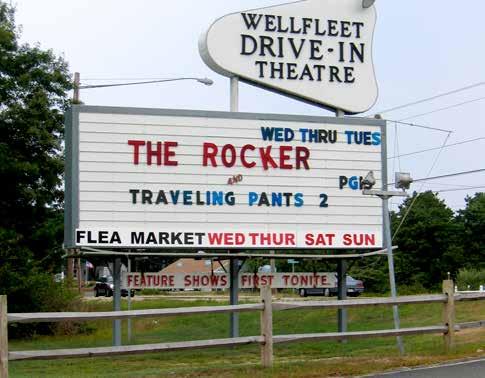
By shAron oliver contriButing Writer
REGION - Massachusetts has the distinct honor of having opened one of America’s first five drive-in theaters, the Weymouth Drive-In, which opened in 1936 but was demolished
in 1964. As a matter of fact, four of America’s first 15 drive-ins were also located in the state. Now, a handful of theaters remain operational and that includes the Northfield Drive-In, Wellfleet Drive-In on the Cape and the Mendon Twin Drive-In, which
Drive-in | 18
exchanging money and drinking beer since there was a fear of drinking water because it sometimes, particularly in earlier times, carried bacteria.
A tourist favorite
Historical paintings of customers from America’s history adorn the walls and the original bar is still there, offering a slight hint of colonial atmosphere. The menu offerings have also grown to meet the demands of not only the thirsty but the famished as well all while maintaining a classic pub selection. It is where patrons can enjoy anything from figs and brie to a crab cake sandwich. Several people took to Yelp to share their experiences.
Lacy E. from Las Vegas wrote: “Fun place to stop in and have a drink in Boston!!!! Great cocktail menu! Really friendly server. Gave us the lowdown on the bar’s history; the whole story is also on their menu too. Lots
of good music and happy vibes inside. Right in the center of town; close to Holocaust memorial, Faneuil Hall and many other attractions.”
Travis S. from Dallas added:
“The oldest tavern in America. Rich in history. Really cool ambiance and set up. All types of local beers on tap. If you’re in Boston this is a must stop by and have a drink and toast to the founders of America.”
Mixing old with new, the historically styled pub can comfortably seat 300 people on busy nights, and the second floor has been transformed into a modern nightclub that can hold up to 200 guests. The tavern’s jukebox has an internet connection offering thousands of songs on demand and is a major hit with customers. The venue also hosts several special events throughout the year, including a celebratory Thanksgiving feast.

Change Brings Uncertainty — Are You Prepared?
I’m hearing:
• Social Security and VA benefits might be changing
• Retirement accounts plummeting
• Real estate values dropping
• Tariffs increasing
• Higher real estate taxes & insurance costs
• More expensive doctors, prescriptions, and at home care
• Credit card balances growing
• Children & family financial needs increasing
• Being forced to sell your home
• And, of course, the unknown financial surprises that we all face
The Good
Reverse
A reverse mortgage may be your solution to reducing financial stress and being able to afford your home. A reverse mortgage is a government guaranteed loan that allows qualified 62-years or older homeowners to receive tax-free cash when needed or desired.
Primary Benefits of a Reverse Mortgage Are:
• No monthly mortgage payments are required
• Note — you are responsible to pay your homeowners insurance, real estate taxes, and meet loan guidelines
• Eliminate your current mortgage or equity line payment
• Receive a lump sum amount of cash, a monthly check, and/or a line of credit that grows as you get older
• Easier income qualification than conventional loans
• No minimum credit score required
• May be used to pay off current mortgage and other debts
• You continue to own and control your home

Alain Valles Reverse Mortgage Specialist 781-724-6221
A great place to start is get your free “How to Use Your Home to Stay at Home” 36-page book. This is the official reverse mortgage consumer booklet approved by the U.S. Department of Housing & Urban Development and published by the National Council on Aging.
To receive your free copy, please call or text me at (781) 724-6221 or email me av@powhse.com
I am also available to evaluate your specific situation, answer your questions, and calculate how much money is available to you.
Alain Valles was the first designated Certified Reverse Mortgage Professional in New England. He obtained a Master of Science from the M.I.T. Center for Real Estate, an MBA from the Wharton School, and graduated summa cum laude from UMass Amherst. He is the senior reverse mortgage loan officer MLO#7946 at Powerhouse Funding Corp. NMLS #1740551. He can arrange but does not make loans. Alain can be reached directly at (781) 724-6221 or by email at av@powhse.com
Drive-in | from page 17
hosts special events throughout the year.
Dennis drive-in’s special feature Perhaps one of the most unusual of these was the Cape’s Dennis Drive-In Fly-In Theater where airplanes would land on the back grassy area of the field and line up behind the cars. The drive-in was built in 1949 on 70 acres with enough room for 1000 cars and survived until 1984. Within two weeks of opening, the owners discussed enlarging the strip to make it accessible for helicopters.
The refreshment stand brought in additional revenue and the Dennis Drive-in reportedly had a clubhouse and dance pavilion as well. Also, there was a rooftop garden area for movie viewing and free pony rides were offered by local resident Charlie Hallet.
In the comment section of Cinema Treasures, Irvinnh recalled, “My family used to vacation in Dennis during the 1950’s, 60’s and 70’s. We used to visit the Dennis Drive-in very often. I can remember going there in my pajamas. I visited the site in 1992 and was saddened to find that it was now an industrial park. All that was left were the foundations for the box office and projection building/snack bar and a few speaker poles. On the bright side that visit piqued my interest in drive-ins again, causing me to check out the Milford Drive-in in Milford, New Hampshire near where I now live. About 2 weeks later we took my two-year old to the drive-in and we’ve been doing that 2 or 3 times a year ever since. So, a family tradition begun at the Dennis Drive-in continues until today.”
Yarmouth’s drive-in on Route 28 faced a contentious beginning. At a hearing in 1956, two owners of an adjoining property voiced concerns about potential traffic complaints and claimed the outdoor movie theater would be injurious and offensive. The theater owners responded in the Register, a local newspaper, that “morals aren’t made in open air theaters, they’re made at home,” and pointed out that neither Dennis
Northfield Drive-In in Northfield opened way back in 1948 and straddles the state border with New Hampshire. (Photo/ Wikimedia Commons)
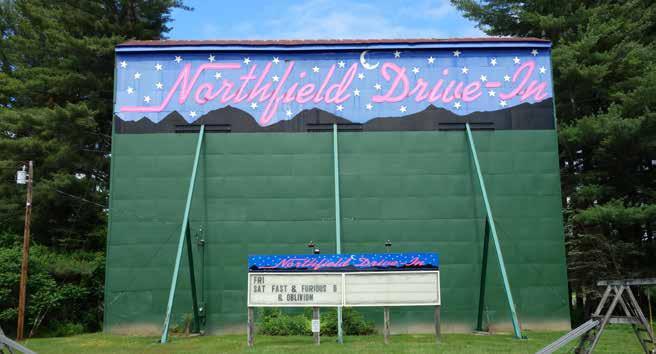
nor Hyannis had accidents caused by their theaters.
A bounty of drive-ins past and present South Shore Plaza Twin Drive-In in Braintree was one of the first on the East Coast to have two-screens and the Neponset Drive-In in Dorchester was a huge hangout spot for teens from the 1950s to the 1970s. The city of Boston later turned the latter into the Pope John Paul II Park. Blue Hills Drive-In closed in 1984 with “Police Academy” and “Risky Business” being the last featured films. Avon Drive-In in Avon opened in 1950 and was demolished in 1993 to build a Walmart store.
Advertised as Cape Cod’s premiere family destination, Wellfleet Drive-In in Wellfleet is practically a shrine to a bygone era. This entertainment business opened in 1957, and the original speaker boxes still
ASSISTED LIVING FACILITIES
Bigelow Village – Rutland
Congregational Retirement –Melrose
Brookhaven Assisted Care – West Brookfield
Heywood Wakefield Commons – Gardner
SUBSIDIZED HOUSING
Colony Retirement – Worcester
Green Hill Towers – Worcester
Sherwood Village – Natick
*_____________________________ EMAIL _ *Your phone number is required to process your request. It will be used only in regard to the properties that you have marked.
sit on the poles. In 1961, the owners opened a minigolf course to occupy customers’ time while waiting to watch a movie. The flea market made its debut in 1974 with vendors traveling from far and wide selling merchandise you might not find elsewhere and an indoor cinema complex was added in 1986. For those seeking to bask in some delicious ice cream bliss, their dairy bar is just the place. Aside from ice cream, the bar also serves frozen yogurt, milkshakes and root beer floats.
Northfield Drive-In has one truly distinguishing feature, in addition to being one of the oldest driveins in the region still operating, having opened in 1948. It is believed to be the only drive-in in the country straddling two states (Massachusetts and New Hampshire). It’s also been featured in a movie itself, when a scene from “The Cider House Rules” was filmed there in 1998.
By shAron oliver contriButing Writer
BOSTON – Nearly a century-old restaurant Charlie’s Sandwich Shoppe is steeped in stories. Located on Columbus Avenue in the city’s South End, Charlie’s is known for serving visiting African American jazz giants during the era of segregated eateries and hotels. It was a place that many in the white community would not patronize because approximately 99 percent of its customers were black. It was where entertainers like Cab Calloway, Duke Ellington and Sammy Davis Jr. chose to dine. In fact, Davis was known to tap dance in front of the restaurant for change when he was a child. It was also where Irish mobsters and police could set aside their opposing positions on the law and dine in one space.
The floor above Charlie’s was once a union hall for the Brotherhood of Sleeping Car Porters, the first black porters’ union, founded by A. Philip Randolph, a labor unionist and civil rights activist. During the Jim Crow era, the bible for black travel was the “Green Book.” In the 1949 edition, the “Green Book” listings for African American neighborhoods in the South End included eight hotels and guest houses, nine restaurants, a couple of barbershops, a half-dozen tailors and the Savoy Nightclub where Malcolm X once shined shoes.
Old-school diner and coffee shop Open since 1927 and often described as “equal parts old-school diner and neighborhood coffee shop,” locals have always loved the restaurant for its breakfast and hash. Charlie’s hash is reportedly so good someone even wrote a book about it. During its first 32-year run, Charlie’s was a 24/7
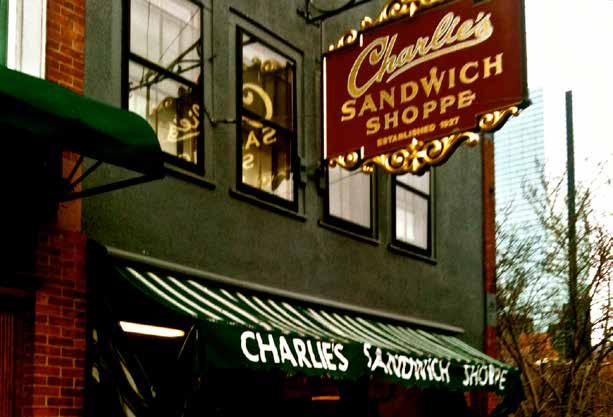
restaurant that operated seven days a week for 36 years including Christmases, but that changed in the 1950s. After temporarily shutting down in 2014, the landmark restaurant reopened and a new dinner menu was introduced while the breakfast and lunch menus remains unchanged.
Moreover, it’s been a top stop for visiting politicians like former Vice President Al Gore and former President Barak Obama. Charlie’s has survived 17 presidencies, two closures, a pandemic and countless snowstorms. The restaurant has won numerous awards over the years and was bestowed the title of “American Classic” by the James Beard Foundation in 2005. In 2023, advocates sought landmark status for Boston’s remaining Negro Motorist Green Book listings – Charlie’s Sandwich Shoppe and
Slade’s Bar and Grill in Roxbury.
Colorful regulars
In a 2014 interview with Boston Magazine, the restaurant’s former co-owner Arthur Manjourides shared some wild stories involving two regulars. “Duke the Pickpocket” was a dapper dresser and professional pickpocket. Manjourides recalled that every once in a while, cops would call asking if Duke was in the restaurant. They would then shout out, “Is Duke the Pickpocket here?” and everyone would immediately check their wallets.
Another character was Arthur “Cookie” Cooke, aka “the mayor of Columbus Avenue.” Cookie was in his 80s and the restaurant’s doorman. He also was an entrepreneur of sorts. According to Manjourides, Cookie

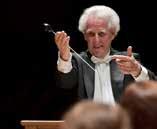

once told a person looking to buy a restaurant that he had one in mind for a mere $3,000. The man meets Cookie at Charlie’s with the money and signs a few papers as Cookie plies him with more and more booze to celebrate. The next day, the poor guy called to say he could not find his money or the signed papers. Cookie replies that it was not his problem. He had “sold” Charlie’s Sandwich Shoppe while they were still open and unaware of this scheme. There is also the story of a flying turkey who mysteriously disappeared around one Thanksgiving. Charlie’s now offers an all new dinner menu featuring Italian family recipes and extended hours. The old countertops, watering station, and the bookie next door who kept watch are now gone but the memories live on.
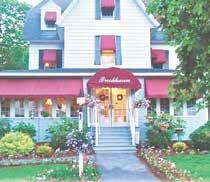
By shAron oliver
contriButing Writer
REGION - Radio personality John Garabedian has been a fixture in the Massachusetts radio and television scene for more than 50 years. However, the 83-year-old Southborough resident is best known as the creator and host of “Open House Party” (OHP) on Kiss 108. Six months after its launch, it was the most-listenedto radio program in Boston on Saturday nights.
Basement beginnings
His good fortune began after attending a party in 1987 where he ran into Kiss 108/WXKS-FM’s Sunny Joe White, who asked Garabedian if he would be interested in doing a weekend shift on the station. During dinner the following week, Garabedian pitched the idea of hosting a big live, interactive, national party show. White loved it. Failing to find the right office space, Garabedian chose to do the show from his basement and strapped a tiny microwave antenna to his chimney and aimed it towards the Prudential Tower which was 24 miles away. After all, he built his first radio station in his suburban
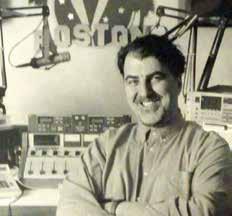
Boston bedroom at the age of 14.
Listeners loved the requested songs, celebrity interviews and danceable music mix and the program grew into a nationally syndicated show with broadcasts on over 175 stations worldwide.
Some of the segments aired on the show included “Make It or Break It” (also called “Rate the Record”). Garabedian played a new song each week and listeners called in with their votes and opinions, and “Who Sings It?” wherein Garabedian played a throwback song (the
fourth song of the show), and listeners called to guess the artist in order to win a prize.
Departure from show
Garabedian sold the show in 2012. He said in a press release: “When I sold ‘Open House Party’ to United Stations four years ago, they required me to host for four more years. That expires at midnight this New Year’s Eve. Though they were surprised I declined to renew, I explained that I had one major life achievement I had yet to accomplish and needed space to do it.”
When United Stations were unable to find a replacement in 2016, they asked Garabedian if he would stay until 2017. His final show aired in January 2017. Since his departure, OPH has changed in terms of presentation and production. Lady Gaga once said in the Boston Herald, “If it weren’t for John Garabedian, no one in America would know who I am.”
In the same article, Garabedian speaks about his first “Open House Party” guests — a couple of “tall good-looking black guys from Germany.” During the interview the host asked the R&B duo how they were able to sing in perfect English. They
replied, ‘We practice very, very hard.” It was later discovered that the two performers known as Milli Vanilli were lip-syncing.
Philip McLaughlin9636 shared this advice on YouTube given to him by Garabedian when they met several years ago: “I met Garabedian in Boston, and he was nice enough to talk to me. I asked him what is your advice for getting into broadcasting. And his reply was just be yourself and have fun with it. Don’t imitate anybody. Let your dreams take you as far as you can go. Never forgot it!”
Many awards
In 2013, Garabedian was awarded “Broadcaster of the Year” for the Massachusetts Broadcasters Association and inducted into the Massachusetts Broadcasters Hall of Fame in 2014. In the spring of 2018, he was nominated for the National Radio Hall of Fame in the category “Longstanding Network/Syndicated Personality (20+ years)” for his 29-year run on “Open House Party.”
In 2024, Garabedian acquired WJIB after the passing of longtime owner and operator Bob Bittner and reimaged it from “The Memory Station” to “The Memories Channel.”
&
• Arthritis
• Tendonitis
• Fractures
• Fungus
• Bunions/Corns
• Calluses/Warts
• Gout
• Structural/ Functional
